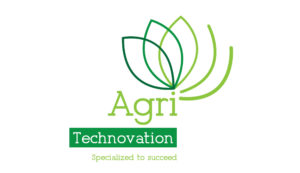Tree crops: Soil variation and its impact on irrigation strategies
by Gareth Glasspool, Senior Soil Scientist and Marnus Ferreira, Head of Soil Science
Most producers over-irrigate
As controversial as this may sound, it is true. To avoid this, all factors that impact irrigation must be understood and considered when deciding on an irrigation strategy. The ideal irrigation strategy is one where both the physical properties and limitations of the soil are considered, in combination with the crop requirement. Many strategies fail when the impact of soil is ignored.
Movement and behaviour of water in soil
The key to a successful irrigation strategy is understanding how water will move through the specific soil profile and, importantly, how water will behave within the root zone. The crop requirement must of course be serviced, and the amount of evaporation considered, but the drainage component and capillary action of the soil water matrix are critical to avoid over-irrigating.
To get this right it is necessary to understand what the ideal irrigation depth should be and to ensure an optimal soil water to oxygen ratio (the ideal Plant Available Water line), which is the sweet spot between having sufficient soil water while maintaining enough oxygen in the profile for roots to transpire. A lack of oxygen resulting from soil that is too wet (over-irrigated), will cause the tree to stop transpiring and subsequently go into stress. This could happen very easily if an irrigation strategy that focuses on the soil’s physical properties is not in place. For example, sandy loam soil has an impermeable rock layer at 400 mm from the surface. If the farmer irrigates with 2 lines of 2 L drip at 600 mm spacing for a period of 6 hours, the entire root zone (which can only ever be distributed within a maximum total depth of 400 mm) will be totally saturated. In this instance, the tree stops functioning effectively in an attempt to survive.
Water would have reached the impermeable rock layer after about 1,5 hours of irrigation. Every drop thereafter would saturate the soil even further, effectively forcing all the oxygen out of the remaining macro- and micropores and replacing it with water.

Figure 1: A visual representation of the distribution of macro- and micropores for clayey and sandy soils (Brady & Weil 2016).
Therefore, every drop added after 1,5 hours is not only wasted, but also actively contributes to initiating stress in the tree. It inhibits healthy root development and decreases the tree’s ability to manage environmental stress factors such as excessive heat during flowering or fruit set.
Once the limiting irrigation depth is identified, a strategy can be put in place that ensures that irrigation run-times distribute water within the root zone without forcing all the life-giving oxygen out of the profile. As mentioned, evapotranspiration has to be serviced, but by understanding what the ideal irrigation depth should be and the rate of delivery, the perfect run-time as well as the ideal time-lapse between irrigation cycles can be calculated.
Soil texture’s role in irrigation management
A key factor to consider in soil water dynamics is the impact of varying soil textures. Clayey soils and sandy soils for example, consist of varying macro- and micropores whereas clayey soils have a mixture of both, while sandy soils are dominated by macropores (Figure 1).
When clayey or fine-textured soils are irrigated, a larger portion of the water is held within the soil pores due to the abundance of micropores facilitating this. In contrast, sandy or coarse-textured soils exhibit free draining due to water moving downwards quickly as the macropores do not hold onto water as efficiently.
Irrigation management should therefore be adjusted based on the soil types to ensure optimal water use efficiency and crop yield. The following table highlights key differences.

The key differences related to the soil characteristics (Table 1) clearly indicate that irrigation management should be tailored to the soil type. Sandy soils require more frequent irrigation events to compensate for the rapid water drainage occurring and less water application time. Clay soils, on the other hand, need less frequent irrigation events due to a higher waterholding capacity, which allows for extended intervals between irrigation events and more water application time.

Figures 2A and B depict two slightly different soil profiles. However, one key commonality is clearly visible: There is a lack of root development between 0 – 300 mm from the surface, below which some roots have developed and survived.
The images illustrate a feature referred to as the ”pot” effect, indicating that the topsoil is being over-irrigated and that irrigation has therefore not been effective and needs to be adjusted. The blue area (Figure 2B) indicates over-irrigation. Here the oxygen has been forced out of the profile leading to root decay. The green area is where the ratio between oxygen and moisture is ideal, making it possible for the roots to survive. The profile in Figure 2A is predominately sandy-textured, with slightly more sandy loam in Figure 2B.
As previously mentioned, water movement is dominated by gravitational potential, which causes very little horizontal movement within a sandy profile. This leads to the profile being irrigated too deeply, and ideal moisture levels cannot (and are not) maintained in the topsoil. To fix this scenario, irrigation needs to be adjusted to ensure that more even water distribution occurs within the profile.
Over-irrigation can be prevented
Irrigation inefficiencies can be adjusted and corrected. It is, however, important to understand the impact different soil textures and characteristics may have on irrigation. At Agri Technovation, our Soil Science department will be able to assist in facilitating the process of correcting irrigation efficiencies. Through the MYSOIL CLASSIFICATION™ service, producers can determine and therefore understand their soil and develop the correct irrigation blueprint for their specific needs.
References:
Brady, N.C. & Weil, R.R., 2001, The Nature and Properties of Soils, Prentice Hall.





